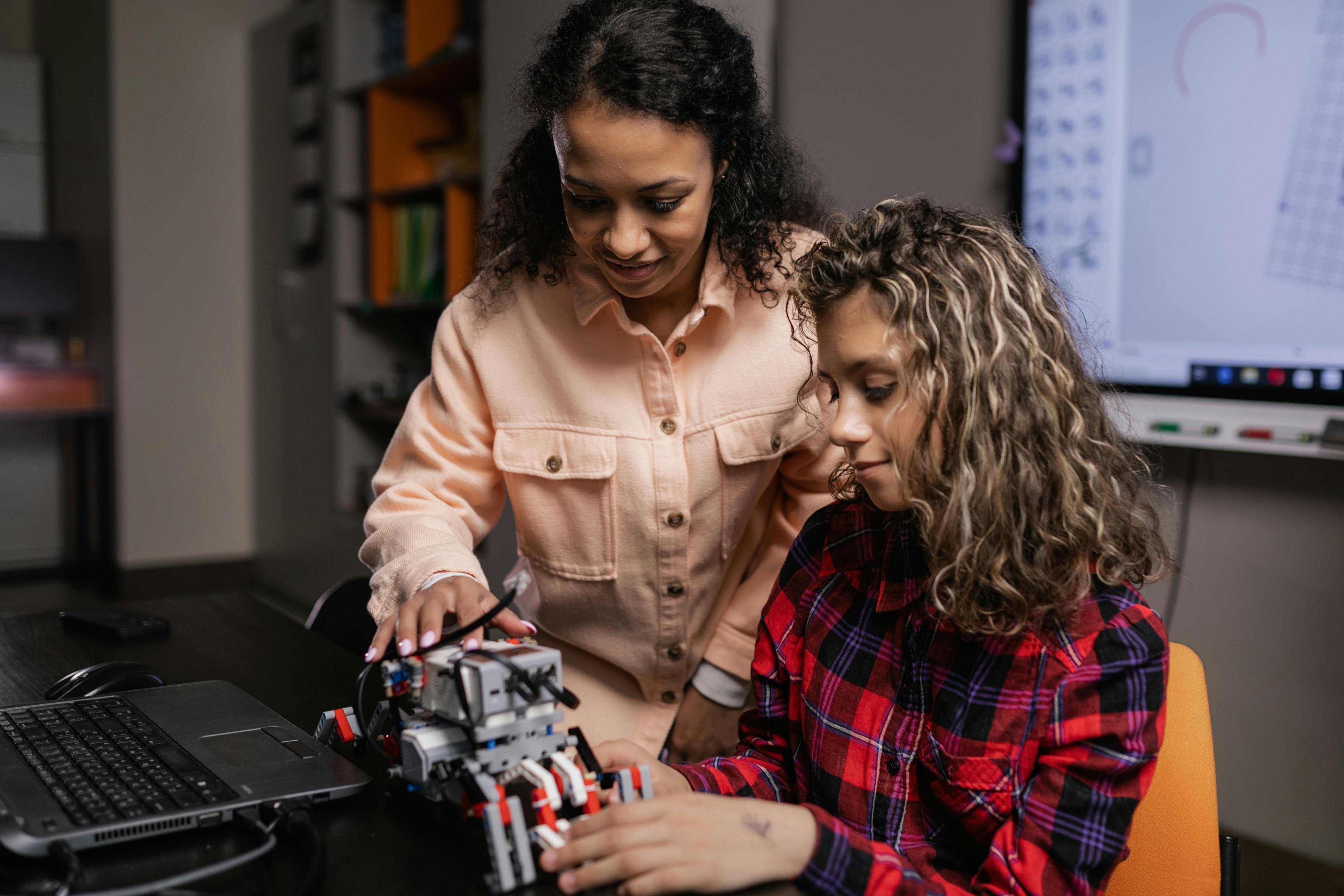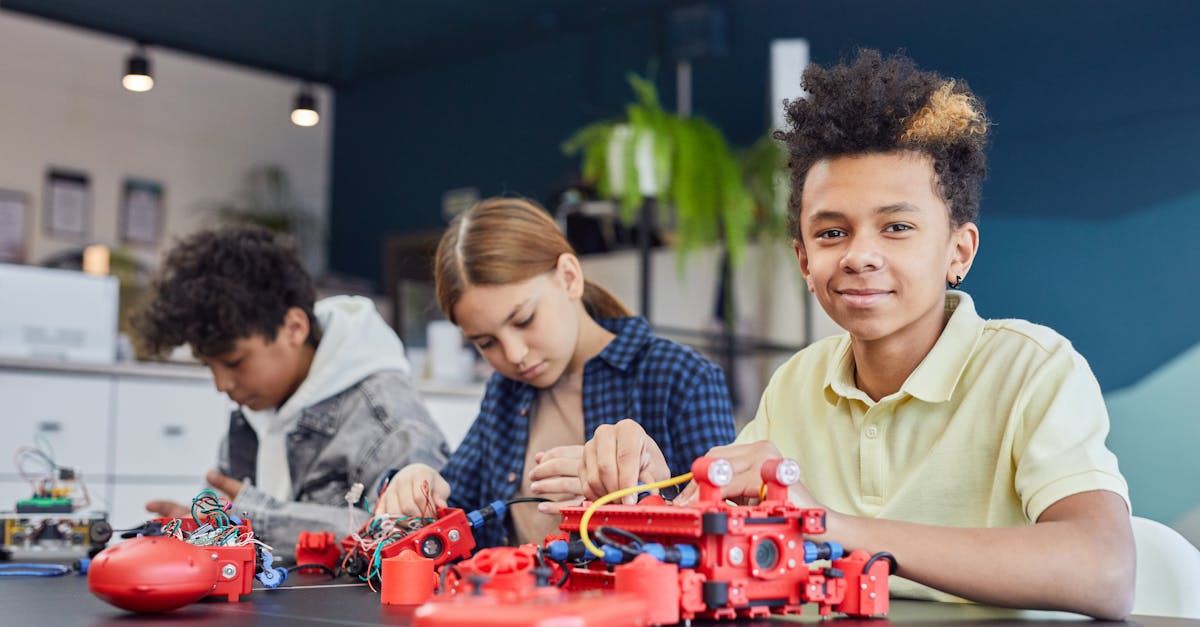Overview
Robotics and Artificial Intelligence (AI) combined in education are quickly changing the way professors teach and students learn. With its revolutionary developments, 2024 seems to be a turning point in the educational industry. This paper examines the key developments using AI and robotics to transform education and make it more efficient, inclusive, and individualized.

AI-Powered Personalization
Personalized education is being revolutionized by Intelligent Tutoring Systems (ITS), which are AI-Powered Personalization. Learning styles, skills, and weaknesses of each student are analyzed by AI algorithms to customize instructional material. This personalization guarantees that students get the ideal level of difficulty without feeling overburdened, therefore maximizing their educational journeys.
Technology of Adaptive Learning: These technologies change the kind and level of content according to how well students do. When a student stumbles, an AI-driven adaptive learning platform will offer easier issues; as they become better, the complexity will progressively rise. That guarantees ongoing participation and advancement.
Leveraging student performance data is crucial to ITS. Artificial intelligence systems provide insights that enable teachers to create more successful teaching plans by examining test results, homework submissions, and classroom interactions. The learning outcomes are much improved by this data-driven method.
Increased Engagement
Classroom Robotics Assistants: Assistants for robotics are becoming to be rather useful in contemporary schools. Through the provision of engaging and dynamic teaching experiences, these robots can help keep students interested. A robot might help to clarify difficult ideas, for example, by means of interactive exercises or demonstrations.

Interactive Learning
Particular instances that show how robots can enhance learning include interactive science experiments and language classes. Robots can modify their teaching strategies in response to instant feedback, therefore including pupils all the time.
Closing the Gaps
Robots are a vital part of special education, helping kids with learning difficulties. Without the aggravation that might come with human contacts, they offer individualized attention and repeated practice sessions. Robots for learning languages also greatly help non-native speakers get over language obstacles.
Immersive Learning with VR and AR
In education, virtual reality (VR) and augmented reality (AR) are revolutionizing immersive learning. From their desks in the classroom, students can now virtually dissect a frog, execute intricate chemical reactions, or investigate historical civilizations.
Simulations and Practical Training: Virtual reality and augmented reality (VR/AR) offer otherwise expensive or logistically difficult practical, hands-on experiences in science labs and vocational training. Students can hone their talents in these safe, repeatable, and varied circumstances.
Prices and Availability: As VR and AR technology get more reasonably priced, they stand to democratize access to excellent education. Advanced instructional tools can help students from all socioeconomic origins, therefore lowering gaps in educational possibilities.
Applications of Administrative AI
Efficiency in Administrative Tasks: Automation of mundane duties like scheduling, grading, and attendance is revolutionizing administrative work in educational institutions. This frees up teachers to concentrate more on instructing and relating to students.
Data Management: AI systems provide insights that aid to enhance curriculum and teaching strategies by organizing and analyzing enormous volumes of student data. Effective data management also guarantees schools’ ability to quickly adjust to shifting needs and requirements in education.
Privacy and Security
Privacy and Security: Making sure data is secure and private becomes critical with its growing use. AI technologies improve data security protocols, preventing illegal access and breaches of private student data.
Ethical Aspects
Data Privacy: Privacy of students is called into question by the enormous amount of data gathered by AI systems. These worries must be allayed by strict data protection regulations and openness in data use.
Inequity and Bias: It is critical that AI systems used in education should not reinforce prejudices. All students should have an equal educational experience since developers must always improve algorithms to be impartial and fair.
Student-Teacher Relationship
Robotics and artificial intelligence should be introduced to support, not to replace, human instructors. The personal relationship that is crucial to good teaching and learning must be maintained by balancing technology with human engagement.
Conclusion
Looking ahead to 2024, artificial intelligence and robotics have enormous and promising potential to revolutionize education. With everything from smart tutoring systems and robotic classrooms to improvements in VR and AR and effective administrative applications, these technologies are revolutionizing individualized and participatory learning. The educational industry may fully use the potential of AI and robotics by addressing ethical issues and guaranteeing fair access, therefore paving the road for a creative future in education.





